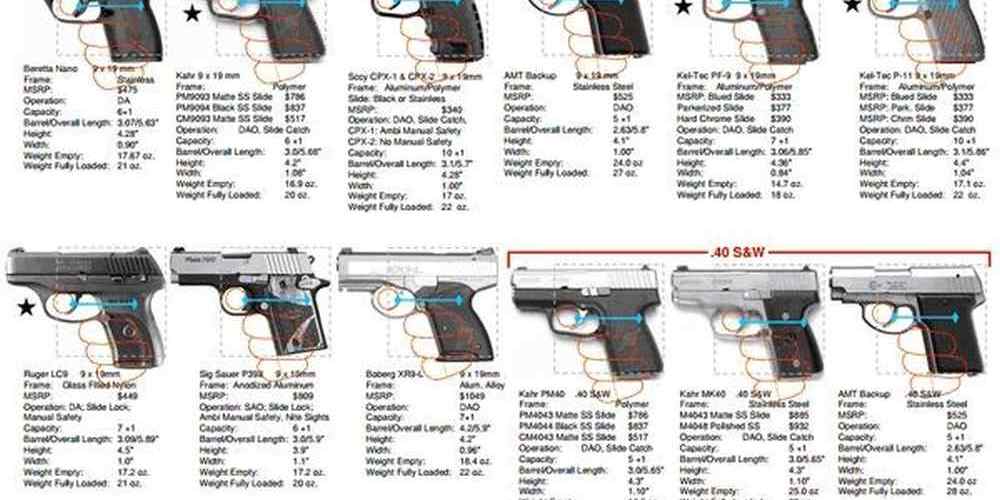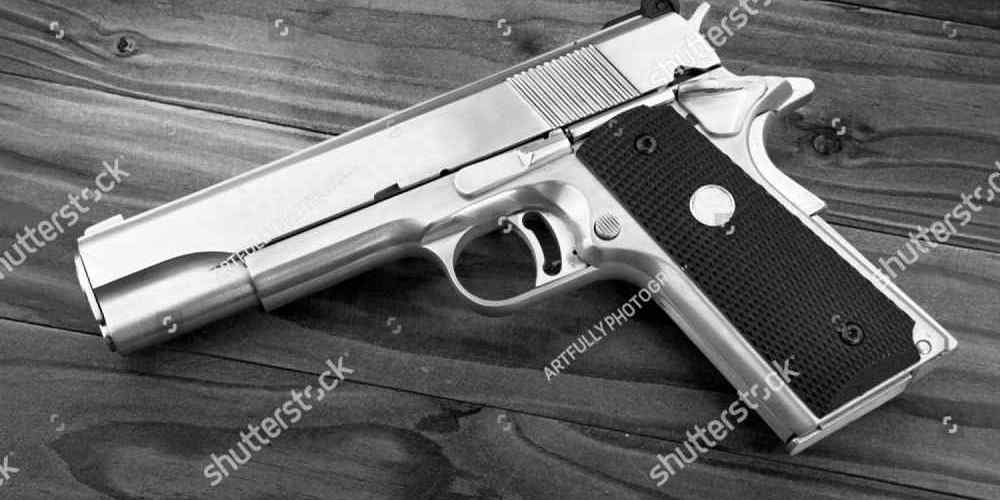“Unleash your potential with precision and speed.”
Benefits of Using Semi-Auto Pistols in IPSC and USPSA
When it comes to competitive shooting sports like IPSC (International Practical Shooting Confederation) and USPSA (United States Practical Shooting Association), having the right equipment can make all the difference. One key piece of equipment that many competitors swear by is the semi-automatic pistol. These firearms offer a number of benefits that can give shooters a competitive edge in these fast-paced and challenging competitions.
One of the main advantages of using a semi-auto pistol in IPSC and USPSA is their capacity. Semi-auto pistols typically have larger magazine capacities than revolvers, allowing shooters to fire more rounds before needing to reload. This can be a huge advantage in competitions where speed and accuracy are key. With more rounds at their disposal, shooters can engage targets more quickly and efficiently, giving them a better chance of coming out on top.
In addition to their higher capacity, semi-auto pistols also offer faster reload times. Most semi-auto pistols are equipped with a magazine release button that allows shooters to quickly and easily swap out empty magazines for fresh ones. This can be a game-changer in competitions where every second counts. Being able to reload quickly and efficiently can help shooters maintain their momentum and stay ahead of the competition.
Another benefit of using a semi-auto pistol in IPSC and USPSA is their versatility. Semi-auto pistols come in a wide range of calibers, sizes, and configurations, allowing shooters to choose a firearm that best suits their individual preferences and shooting style. Whether you prefer a compact 9mm for fast-paced stages or a full-size .45 ACP for maximum stopping power, there is a semi-auto pistol out there for you.
Semi-auto pistols also offer a number of ergonomic advantages that can help shooters perform at their best. Many semi-auto pistols feature adjustable grips, sights, and triggers that can be customized to fit the shooter’s hand size and preferences. This can help improve accuracy and control, allowing shooters to make more precise shots under pressure.
In addition to their ergonomic advantages, semi-auto pistols are also easier to maintain and clean than revolvers. Most semi-auto pistols can be field-stripped and cleaned in a matter of minutes, making them ideal for shooters who want to spend more time on the range and less time in the workshop. This ease of maintenance can help shooters keep their firearms in top condition, ensuring reliable performance when it matters most.
Overall, the benefits of using a semi-auto pistol in IPSC and USPSA competitions are clear. From their higher capacity and faster reload times to their versatility and ergonomic advantages, semi-auto pistols offer shooters a competitive edge that can help them succeed in these challenging and dynamic shooting sports. So if you’re looking to take your shooting game to the next level, consider picking up a semi-auto pistol and see how it can help you reach new heights in competition.
Top Semi-Auto Pistols for Competitive Shooting
When it comes to competitive shooting, having the right equipment can make all the difference. In disciplines like IPSC (International Practical Shooting Confederation) and USPSA (United States Practical Shooting Association), where speed and accuracy are paramount, choosing the right semi-auto pistol can give you the competitive edge you need to come out on top.

One of the top choices for competitive shooting is the STI DVC 3-Gun. This pistol is specifically designed for the rigors of 3-gun competition, with features like a 5.4-inch bull barrel, a lightweight aluminum frame, and a crisp 2.5-pound trigger pull. The DVC 3-Gun also comes with adjustable sights and a fiber optic front sight, making it easy to acquire targets quickly and accurately.
Another popular option is the CZ Shadow 2. Known for its exceptional accuracy and reliability, the Shadow 2 is a favorite among competitive shooters. With a 4.89-inch barrel, a low bore axis, and a smooth trigger pull, the Shadow 2 allows for fast and precise shooting. The pistol also features an extended beavertail and aggressive checkering for improved grip and control.
For those looking for a more budget-friendly option, the Glock 34 is a solid choice. With a 5.31-inch barrel, a polymer frame, and a consistent trigger pull, the Glock 34 is a reliable and accurate pistol for competitive shooting. The pistol also comes with adjustable sights and a large magazine capacity, making it a practical choice for both IPSC and USPSA competitions.
If you prefer a more traditional design, the 1911-style STI DVC Limited is a great option. With a 5-inch bull barrel, a steel frame, and a crisp 2.5-pound trigger pull, the DVC Limited offers exceptional accuracy and control. The pistol also features adjustable sights and a fiber optic front sight for quick target acquisition.
When choosing a semi-auto pistol for competitive shooting, it’s important to consider factors like barrel length, trigger pull, grip, and sight options. A longer barrel can improve accuracy, while a lighter trigger pull can help with speed and precision. A comfortable grip and adjustable sights can also make a big difference in your performance on the range.
Ultimately, the best semi-auto pistol for competitive shooting is the one that feels comfortable and natural in your hands. It’s important to practice with your chosen pistol regularly to develop muscle memory and improve your shooting skills. With the right equipment and plenty of practice, you can take your competitive shooting to the next level and achieve success in IPSC and USPSA competitions.
Training Tips for Improving Performance with Semi-Auto Pistols
When it comes to competitive shooting sports like IPSC (International Practical Shooting Confederation) and USPSA (United States Practical Shooting Association), having the right equipment can make all the difference. One of the most popular choices for these competitions is the semi-automatic pistol. These firearms offer a number of advantages that can give shooters a competitive edge on the range.
One of the key benefits of using a semi-auto pistol in IPSC and USPSA competitions is their fast rate of fire. Unlike revolvers, which require shooters to manually cock the hammer between shots, semi-autos are capable of firing multiple rounds in quick succession. This can be a game-changer in timed events where every second counts. By practicing with a semi-auto pistol, shooters can improve their speed and accuracy, giving them a leg up on the competition.
Another advantage of semi-auto pistols is their larger magazine capacity. Most semi-autos can hold anywhere from 10 to 20 rounds, compared to the 6 to 8 rounds typically found in revolvers. This means that shooters can spend less time reloading and more time focusing on their shots. In IPSC and USPSA competitions, where stages are often designed to test a shooter’s ability to engage multiple targets quickly, having a larger magazine capacity can be a significant advantage.
In addition to their speed and capacity, semi-auto pistols also offer shooters the ability to customize their firearms to suit their individual preferences. From adjustable sights to aftermarket triggers, there are a wide range of accessories available that can help shooters fine-tune their pistols for maximum performance. By experimenting with different modifications and configurations, shooters can find the setup that works best for them, giving them a competitive edge on the range.
Of course, having the right equipment is only part of the equation when it comes to competitive shooting. To truly excel in IPSC and USPSA competitions, shooters must also put in the time and effort to hone their skills. This means practicing regularly, both on the range and off. Dry fire drills can help shooters improve their trigger control and sight alignment, while live fire practice can help them work on their speed and accuracy.
When training with a semi-auto pistol, it’s important to focus on the fundamentals of marksmanship. This includes proper grip, stance, sight alignment, and trigger control. By mastering these basic skills, shooters can build a solid foundation that will serve them well in competition. It’s also important to practice shooting on the move, as many IPSC and USPSA stages require shooters to engage targets while on the run. By incorporating movement into their training regimen, shooters can improve their agility and adaptability on the range.
In conclusion, semi-auto pistols are a popular choice for competitive shooters in IPSC and USPSA competitions for good reason. Their fast rate of fire, large magazine capacity, and customizability make them a versatile and effective option for shooters looking to gain a competitive edge. By practicing regularly and focusing on the fundamentals of marksmanship, shooters can improve their performance with semi-auto pistols and increase their chances of success on the range. So, if you’re looking to take your shooting skills to the next level, consider giving a semi-auto pistol a try.
Differences Between IPSC and USPSA Rules for Semi-Auto Pistols
When it comes to competitive shooting sports, the use of semi-automatic pistols is a common choice among participants. In particular, the International Practical Shooting Confederation (IPSC) and the United States Practical Shooting Association (USPSA) are two of the most popular organizations that host competitions for shooters who prefer semi-auto pistols. While both organizations have similar goals of promoting safe and competitive shooting, there are some key differences in the rules and regulations that govern the use of semi-auto pistols in IPSC and USPSA events.
One of the main differences between IPSC and USPSA rules for semi-auto pistols is the division of competitors based on their skill level. In IPSC competitions, shooters are divided into different divisions based on the type of pistol they are using, such as Production, Standard, Open, and Classic divisions. Each division has its own set of rules regarding the modifications that can be made to the pistol, the number of rounds that can be loaded into the magazine, and other equipment restrictions.
On the other hand, USPSA competitions do not have as many divisions as IPSC. Instead, shooters are divided into different classes based on their skill level, such as Grand Master, Master, A, B, C, and D classes. While USPSA does have divisions for different types of pistols, such as Limited, Open, and Production divisions, the focus is more on the shooter’s skill level rather than the type of pistol they are using.
Another key difference between IPSC and USPSA rules for semi-auto pistols is the scoring system used in competitions. In IPSC events, shooters are scored based on their time to complete a course of fire and the accuracy of their shots. The scoring system in IPSC is based on a hit factor, which takes into account the number of points scored and the time taken to complete the course of fire.
In contrast, USPSA competitions use a different scoring system known as the Comstock scoring system. In USPSA events, shooters are scored based on the total number of points scored for each target hit, regardless of the time taken to complete the course of fire. This scoring system rewards shooters who are able to accurately hit targets with a higher number of points, regardless of how quickly they are able to complete the course of fire.
Despite these differences in rules and scoring systems, both IPSC and USPSA competitions offer shooters the opportunity to test their skills with semi-auto pistols in a competitive and challenging environment. Whether you prefer the division-based system of IPSC or the class-based system of USPSA, there is no shortage of opportunities to showcase your shooting skills and compete against other shooters who share your passion for semi-auto pistols.
In conclusion, the use of semi-auto pistols in IPSC and USPSA competitions offers shooters a unique opportunity to test their skills and compete against others in a safe and challenging environment. While there are some key differences in the rules and regulations that govern the use of semi-auto pistols in IPSC and USPSA events, both organizations provide shooters with the opportunity to showcase their shooting skills and compete against others who share their passion for competitive shooting sports. So whether you prefer the division-based system of IPSC or the class-based system of USPSA, there is no shortage of opportunities to gain a competitive edge with your semi-auto pistol skills.
Common Mistakes to Avoid When Using Semi-Auto Pistols in Competition
When it comes to competitive shooting sports like IPSC (International Practical Shooting Confederation) and USPSA (United States Practical Shooting Association), having the right equipment can make all the difference. Semi-auto pistols are a popular choice among competitors due to their fast shooting capabilities and high magazine capacity. However, using a semi-auto pistol in competition requires skill and precision to maximize its potential. In this article, we will discuss some common mistakes to avoid when using semi-auto pistols in IPSC and USPSA competitions.
One of the most common mistakes that shooters make when using semi-auto pistols in competition is not properly maintaining their firearms. Regular cleaning and maintenance are essential to ensure that your pistol functions reliably during a match. Neglecting to clean your pistol can lead to malfunctions and misfires, which can cost you valuable points in a competition. Make sure to clean your pistol after every practice session and before every match to keep it in top condition.
Another common mistake that shooters make is using the wrong ammunition in their semi-auto pistols. Different pistols are designed to shoot specific types of ammunition, and using the wrong ammo can cause malfunctions and damage to your firearm. Make sure to use the correct caliber and bullet weight for your pistol to ensure optimal performance. It is also important to use high-quality ammunition from reputable manufacturers to minimize the risk of malfunctions.
Improper grip and stance are also common mistakes that shooters make when using semi-auto pistols in competition. A proper grip is essential for controlling recoil and maintaining accuracy while shooting. Make sure to grip the pistol firmly with your dominant hand and support hand, keeping your thumbs pointed forward and your wrists locked. Your stance should be stable and balanced, with your feet shoulder-width apart and your body leaning slightly forward. Practice your grip and stance regularly to develop muscle memory and improve your shooting skills.
Failing to practice proper trigger control is another common mistake that shooters make when using semi-auto pistols in competition. Trigger control is crucial for accurate shooting, as even the slightest movement can cause your shots to go off target. Make sure to press the trigger smoothly and steadily, without jerking or flinching. Practice dry firing drills to improve your trigger control and develop a consistent shooting technique.
Lastly, not practicing reloads and malfunction drills is a common mistake that shooters make when using semi-auto pistols in competition. Reloading quickly and efficiently is essential for maintaining a fast pace during a match, while malfunction drills are necessary for clearing jams and malfunctions under pressure. Practice reloading your pistol from both slide lock and tactical reloads, and practice clearing malfunctions such as stovepipes and double feeds. Developing these skills will help you stay competitive and perform well in IPSC and USPSA competitions.
In conclusion, using a semi-auto pistol in IPSC and USPSA competitions can give you a competitive edge, but only if you avoid common mistakes and practice diligently. Make sure to maintain your pistol regularly, use the correct ammunition, practice proper grip and stance, work on trigger control, and practice reloads and malfunction drills. By avoiding these common mistakes and focusing on improving your skills, you can maximize the potential of your semi-auto pistol and achieve success in competitive shooting sports.




